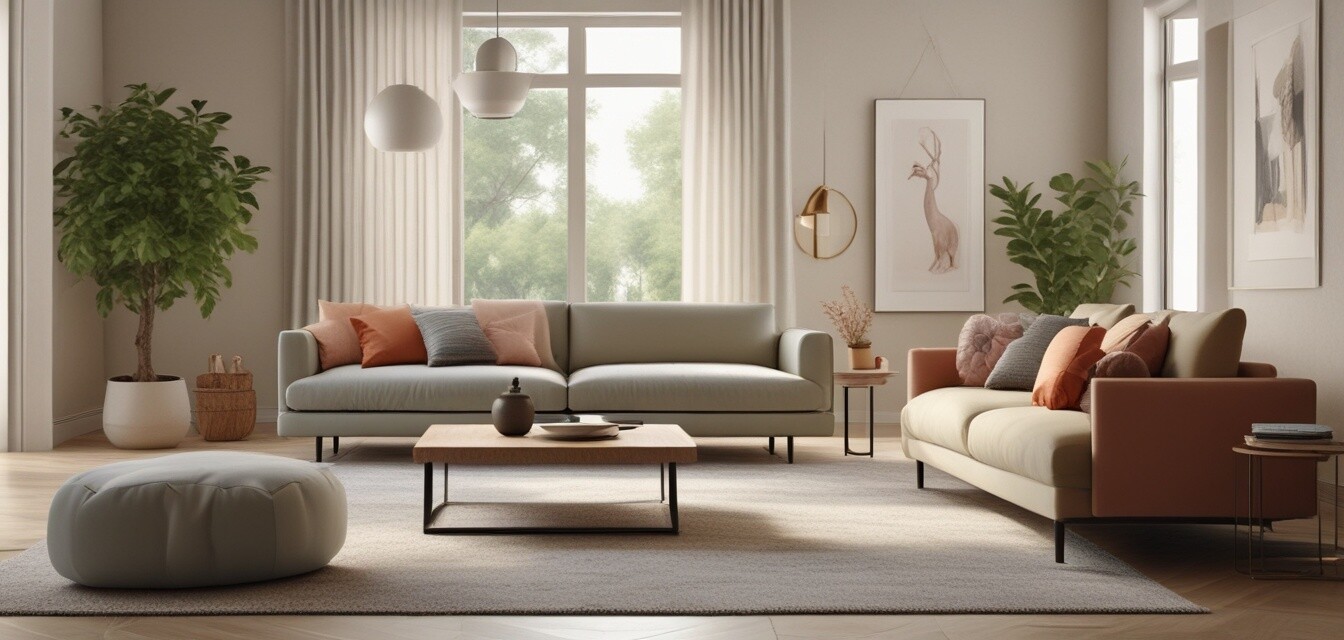
Trends in Color for Sustainable Furniture
- The color palette for sustainable furniture is shifting towards earthy tones, including greens, browns, and ochres.
- Soft pastels are gaining popularity, reflecting a serene and calming aesthetic.
- Vibrant accent colors are being used to create focal points while maintaining sustainability.
- Consumer interest is tilting towards natural finishes and organic hues to complement eco-friendly designs.
- Innovation in materials is allowing for a wider range of sustainable color options.
With the rise of eco-conscious living, the world of sustainable furniture is evolving, particularly in terms of color design. As we approach 2025, various color trends are emerging that reflect both the needs of the consumer and concerns for the environment. In this article, we will explore the trending hues making a mark on sustainable furniture design.
The Shift towards Earthy Tones
One of the most significant trends in sustainable furniture is the move towards earthy tones. Colors like forest green, terracotta, and warm browns are not only inspired by nature but also create a sense of warmth and grounding in any space. Here are a few popular earthy shades:
| Color | Shade Code | Pairing Suggestions |
|---|---|---|
| Forest Green | #228B22 | Neutral whites, warm wooden accents |
| Terracotta | #D15A29 | Soft creams, dusty pinks |
| Warm Brown | #8B4513 | Burnt orange, deep blues |
Embracing Soft Pastels
As we move toward a more sustainable future, soft pastels are becoming increasingly popular in furniture design. These gentle colors contribute to a relaxing atmosphere, perfect for a home environment. Some trending pastel colors include:
- Pale Blue (#B0E0E6)
- Mint Green (#98FF98)
- Lavender (#E6E6FA)
These colors not only soothe the mind but also encourage a softer, more inviting space. For more on pastel palettes, check out our article on eco-friendly living.
The Role of Accent Colors
Vibrant accent colors, while maintaining a core of sustainability, are being incorporated into furniture to create striking focal points. Bright yellows, deep blues, and rich reds are juxtaposed against natural wooden finishes or neutral backdrops.
| Accent Color | Emotional Impact | Best Uses |
|---|---|---|
| Vibrant Yellow | Cheerful and uplifting | Pillows, decor accessories |
| Deep Blue | Calming and reliable | Accent chairs, tables |
| Rich Red | Bold and energizing | Wall art, statement pieces |
Natural Finishes and Organic Hues
The trend towards natural finishes is also a significant component of the evolving sustainable furniture landscape. Furniture designers are now showcasing the beauty of natural wood grains and organic hues. Item finishes that promote the look of raw materials, like reclaimed wood and sustainably-sourced timbers, are becoming commonplace.
Examples of Natural Finishes
- Reclaimed Pine
- Bamboo
- Walnut
Innovation in Sustainable Materials
Innovative technologies have transformed the types of materials used in sustainable furniture. Brands are increasingly experimenting with bio-based paints, natural dyes, and finishes that create various color possibilities. For a detailed insight into eco-friendly materials, visit our section on buying guides.
Consumer Preferences Shaping Trends
As awareness of sustainability grows, consumer preferences are evolving. Shoppers are now more inclined to choose furniture that offers both style and a commitment to eco-friendly practices. This trend influences manufacturers to create products that feature:
- Non-toxic paints and finishes
- Recyclable materials
- Minimalistic designs with emphasis on function
Pros
- Supports environmental sustainability.
- Offers a wide range of aesthetic choices.
- Promotes healthier indoor air quality.
Cons
- May have a higher upfront cost.
- Limited options in some styles compared to conventional furniture.
Conclusion
As we look ahead to 2025, the landscape of sustainable furniture continues to grow, with a clear emphasis on colors that promote peace, creativity, and connection to nature. Whether you favor earthy tones, soft pastels, or striking accent colors, the choices available align with a commitment to a healthier planet. Explore our various categories to discover more about corner TV stands, metal and glass TV stands, and other eco-friendly options that complement your design preferences.